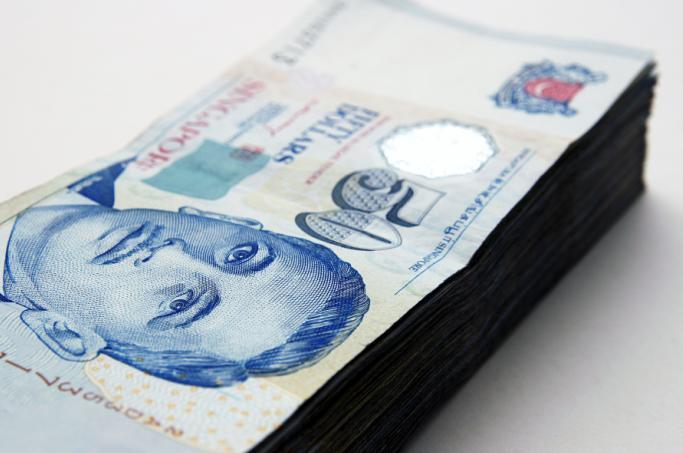
Singapore dollar virtually unchanged at $1.2256
The greenback is said to be under a lot of pressure after the QE3 announcement which saw it lose ground against all major currencies.
IG Markets Singapore said:
The Singapore dollar has remained in a very tight trading range against the greenback this week, virtually unchanged at $1.2256.
The USD is still feeling plenty of downward pressure after last week’s QE3 announcement which saw it lose ground against all major currencies.
It fell below the $1.23 level against the local currency on Friday and has remained at this level throughout this week.
But a strong Sing dollar is no longer good for the local economy as it increases the costs of buying Singapore exports, at a time when international trade is suffering, particularly to the eurozone.
This could see MAS slow down its appreciation of SGD as a result.
DBS Group Research meanwhile noted:
EUR/USD is tracking government bond yields in Spain. Eurozone is still working on Plan A to save the euro.
First, get the European Central Bank (ECB) to prevent the divergence in government borrowing costs.
The second harder part, get the struggling EU countries to stand behind their public debt with austerity and reforms to restore their fiscal deficit/debt ratios to sustainable levels.
The market wants Spain to set an example that the ECB’s latest rescue efforts – the Outright Monetary Transactions (OMT) Scheme – will not result in moral hazard. Put simply, if Spain agrees to a bailout program, it will be viewed favorably.
AUD/USD is watching the China-Japan spat closely. The Australian dollar had been a beneficiary of America’s QE policies which encouraged yield carry trades.
After the Fed delivered on its QE3 promise on September 13, AUD/USD retreated from its 1.0624 high the next day to a low of 1.0405 yesterday. QEs were traditionally associated with a weak US dollar against Asian currencies, especially the Chinese yuan.
The purpose was to increase the purchasing power of Asians to help smooth their transition towards economies driven more by domestic demand.
For Australia, this is important because China and Japan, together, accounted for more than 40% of demand for Australia’s exports. The country’s top two trade surpluses are also with China and Japan.
Finally, unlike QE1 and QE2, the world outlook is still hampered by US/EU fiscal consolidation worries despite QE3.
























 Advertise
Advertise










